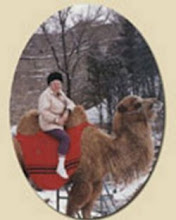
What Is Halloween?
The word Halloween is from Hallowe'en (1. According to the Irish English dictionary published by the Irish Texts Society: the Night of the Winter Calends, signalizing the close of harvest and the initiation of the winter season, lasting till May 2. Scottish Gaelis Dictionary defines it as Hallowtide. The Feast of All Soula. end of summer.). This is a contraction of All Hallows Eve, or the night before the 'All Hallows', also called 'All Hallowmas', or 'All Saints', or 'All Souls' Day. In old English the word 'Hallow' meant 'sanctify'.
Some History on Halloween Festival!
The festival was first celebrated on February 21, the end of the Roman year. In the 7th century, Pope Boniface IV introduced All Saints' Day to replace the pagan festival of the dead on May 13. Later, Gregory III changed the date to November 1.
Despite this connection with the Roman Church, the American version of Halloween Day celebration owes its origin to the ancient Celtic festival of Samhain (pronounced sow-in).
The Celts, who lived 2,000 years ago in the area that is now Ireland, the United Kingdom, and northern France, celebrated their new year on November 1. To them, this day marked the end of summer, harvest and the beginning of the dark, cold winter, that was often associated with death. Celts believed that on the night of October 31, the boundary between the worlds of the living and the dead became blurred, it was believed that the ghosts of the dead returned to earth. Celts thought that the presence of the otherworldly spirits made it easier for the Druids, or Celtic priests, to make predictions about the future which were an important source of comfort and direction during the long, dark winter.
During the event, Druids built huge sacred bonfires, where the people gathered to burn crops and animals as sacrifices to the Celtic deities. Celts wore costumes, typically consisting of animal heads and skins and attempts to make prophecies. After the celebration, they re-lit their hearth fires, which they had extinguished earlier that evening, from the sacred bonfire to help protect them during the coming winter.
By A.D. 43, Romans had conquered the majority of Celtic territory. In the course of the four hundred years of rule on the Celtic lands, two festivals Feralia (commemorated the passing of the dead) and Pomona (Roman goddess of fruit and trees), were combined with the traditional Celtic celebration of Samhain.
By the 800s, Christianity influence had spread into Celtic lands. In the seventh century, Pope Boniface IV designated November 1 All Saints' Day, a time to honor saints and martyrs. It is widely believed today that the pope was attempting to replace the Celtic festival of the dead with a related, but church-sanctioned holiday. The celebration was also called All-hallows or All-hallowmas (from Middle English Alholowmesse meaning All Saints' Day) and the night before it, the night of Samhain, began to be called All-hallows Eve and, eventually, Halloween. Even later, in A.D. 1000, the church would make November 2 All Souls' Day, a day to honor the dead. It was celebrated similarly to Samhain, with big bonfires, parades, and dressing up in costumes as saints, angels, and devils. Together, the three celebrations, the eve of All Saints', All Saints', and All Souls', were called Hallowmas.
This item is now available in my Etsy shop!
http://www.r2swanger.etsy.com




No comments:
Post a Comment